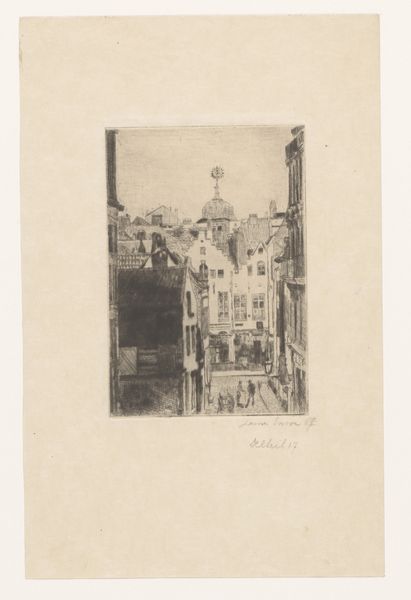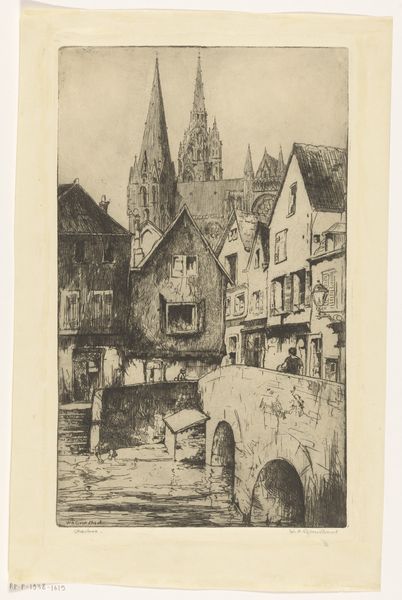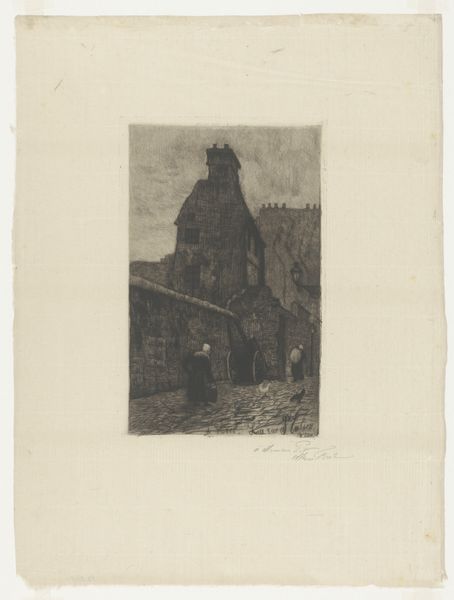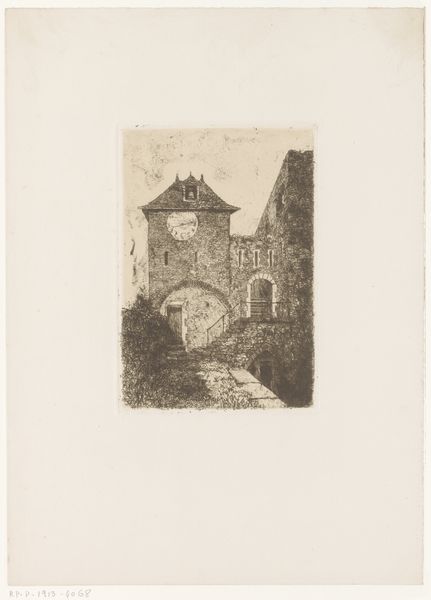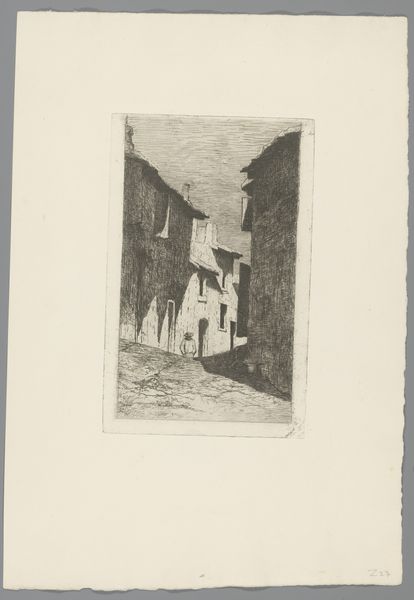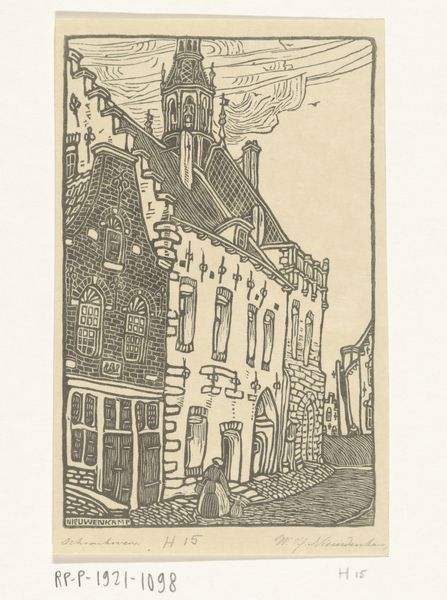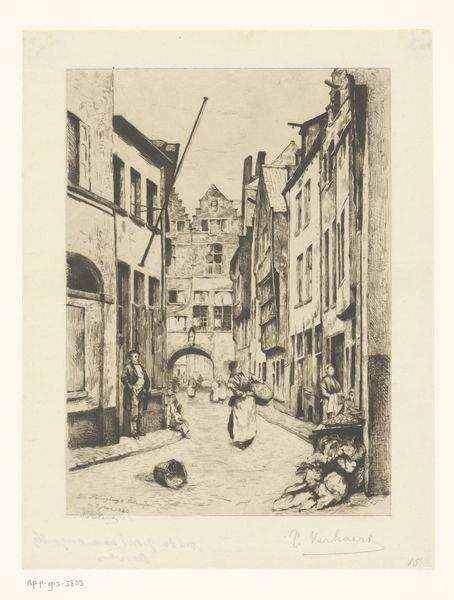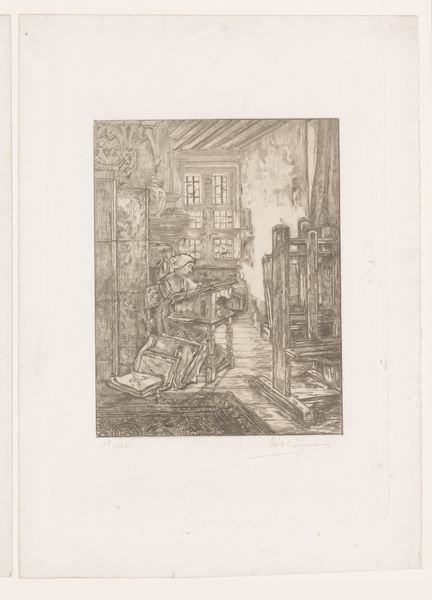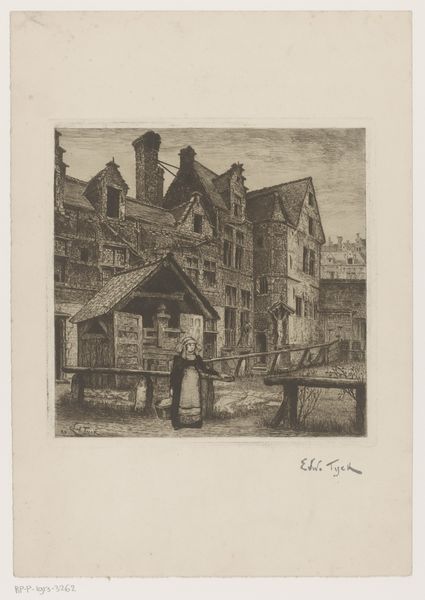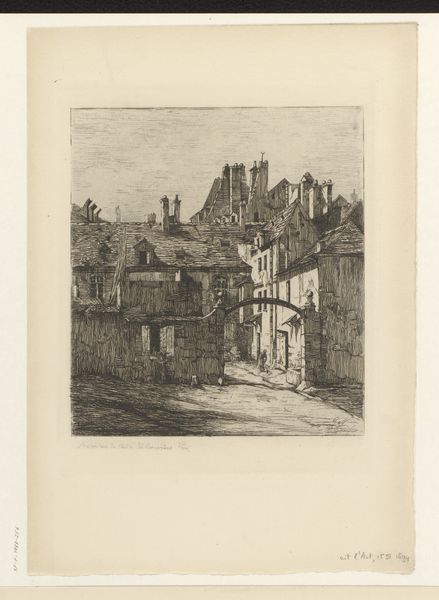
drawing, print, etching, paper
#
drawing
#
ink paper printed
# print
#
etching
#
paper
#
cityscape
#
genre-painting
#
street
#
realism
Dimensions: height 244 mm, width 196 mm
Copyright: Rijks Museum: Open Domain
Curator: Here we have Werner Vogel’s “Two Women on the Street,” an etching made sometime between 1899 and 1949. What stands out to you initially? Editor: There's a subdued, almost melancholic atmosphere. The monochromatic palette certainly contributes, and the architectural lines, while ordered, feel weighty. It reminds me of a quiet, almost secretive gathering. Curator: Indeed, the somber quality is achieved in part through Vogel’s strategic use of line. Notice how he builds form with short, dense strokes, creating areas of deep shadow that convey both age and stillness. The very deliberate and somber representation of these women and their environment. What symbolic interpretations come to mind? Editor: I’m struck by the socio-economic implications of the image. Consider the women: their clothing, their postures suggest their positions within this society, possibly restricted, certainly defined by their domestic roles within that enclosed community. The street, in that context, is a public space for their interactions and possibly restrictions. Curator: Yes, and the cityscape itself acts as a symbol. Think of how cityscapes have, since antiquity, often functioned in art as mirrors reflecting societal values and individual roles. Here, we observe older architectural styles melding with simpler forms, a potential reflection of tradition interacting with change. These elements—houses, figures, even the little dog—are not simply illustrative; they carry significant weight. Editor: The dog is intriguing; there is something subtle and unexpected. Its inclusion could suggest the everyday intruding upon the established societal norms, perhaps even offering them limited mobility or freedom? Curator: That could definitely be a sign. It suggests the introduction of a somewhat uncontrollable element, hinting at hidden connections and unexpected meanings that permeate our everyday interactions within established orders. This creates a certain balance. Editor: Vogel has masterfully built multiple, overlapping interpretations. This invites a conversation around individual expression, representation, societal pressures, and personal experience. Curator: Indeed. Vogel compels us to examine not only what we observe, but what societal and individual realities lie behind. This gives cause for reflection.
Comments
No comments
Be the first to comment and join the conversation on the ultimate creative platform.
